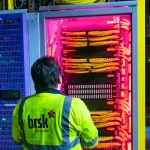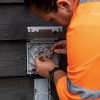Rural UK ISP Truespeed Plans Faster Full Fibre Build for 2023

Bath-based alternative network UK ISP Truespeed, which is deploying a new 10Gbps capable Fibre-to-the-Premises (FTTP) broadband network across rural parts of South West England, has today reported that their network now covers 60,000 premises (up from 50k in Sept 2022) and has 13,000 customers (up from 11,500) – 21.67% take-up.
The operator, which holds an “ambitious” target to reach 500,000 properties by the end of 2026 (mostly across Devon and Somerset), is currently being funded by a £175 million investment from Aviva and they added 25,000 new properties to their coverage during 2022.
On top of that, they also hired over 80 new employees (totalling 225 employees by the end of 2022) and are supporting several community-focused festivals and initiatives. Plus, they’ve so far connected over 140 schools and community hubs to their full fibre network. The provider’s update added that they’ve also invested heavily across the South West in 2022 in several areas, including those listed below.
Advertisement
Truespeeds South West Expansion Locations (2022)
· Portishead and Clevedon: £9m investment
· Peasedown St John, Midsomer Norton, Keynsham, Saltford, Radstock: £8m investment
· Uphill, Banwell, Sandford: £4m investment
· Thornbury, Almondsbury, Bradley Stoke, Patchway, Stoke Gifford and Chipping Sodbury: £14m investment
· Bathwick, Widcombe and Combe Down: £4m investment
The next short-term goal is now to more than double the size of its current footprint of 60,000 properties (i.e. 120,000) and also double the number of connected customers (i.e. 26,000) by the end of 2023. We should add that they’re also in the process of adopting ADTRAN’s XGS-PON hardware to power their ongoing deployments.
We should point out that a fair bit of Truespeed’s earlier build adopted more of a demand-led approach, which will have helped to drive a strong level of take-up.
James Lowther, CEO at Truespeed, said:
“2022 was a fantastic year for the business, in terms of setting higher ambitions and increasing the pace of our growth while maintaining high customer satisfaction scores and community engagement across the South West. Our network is growing fast, and our goal is to more than double the number of properties that are ready for service in 2023 and continue investing across the region. To help achieve this, we also plan to take advantage of the first-class talent pool in the South West and will step up hiring.
While the stats and figures make for happy reading, they’re only part of our story. We want to build a truly better broadband business by putting our customers and communities at the heart of everything we do… by freezing our prices during a cost-of-living crisis, by offering free connections to local schools and community centres and by offering much better customer service. This is our promise to the South West.”
Residential customers typically pay from £25 per month on a 12-month term (£40 thereafter) for their entry-level 150Mbps package, which includes installation and a wireless router. This rises to £49 for their top 900Mbps tier (£70 thereafter), which adds a Linksys Wi-Fi 6 router.
Mark is a professional technology writer, IT consultant and computer engineer from Dorset (England), he also founded ISPreview in 1999 and enjoys analysing the latest telecoms and broadband developments. Find me on X (Twitter), Mastodon, Facebook, BlueSky, Threads.net and Linkedin.
« Vodafone Reports UK Broadband Base of 1.16 Million Customers
EE UK Deploys 5G Mobile Broadband on London Underground »





















































Surveying my village last month.
More Mayham, assume the investors can’t see the disruption and safety hazards.
If you want to build a new full fibre network, then you can’t do that and completely avoid all the noisy and disruptive civil engineering side. PIA helps, but at some point you’ve still got to do street works.
Have seen them destroy the infrastrcture already in place, cables hanigng off poles etc
So it looks like CDS plan is to sit on their laurels while companies build everywhere that is commercially viable, Creating networks which avoid great swathes of harder to reach premises. Rather than deliver funding at this stage to build networks a bit wider it instead leaves the maximum number of hard to reach properties with the largest cost. Good job. I guess we will have to wait for a complete commercial rollout, then wait for a new survey of the costs of supply, back to government coffers for new funding, and in 5 years time find Openreach, having completed its network and reduced its staffing, chip away at these properties over the next 5-10 years..
Or am I being overly pessimistic?